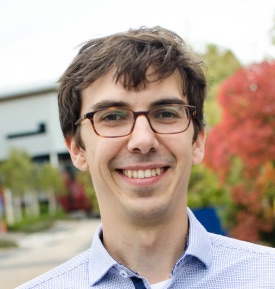
Professor of Materials Physics
Gianna Angelopoulos Lecturer in Computational Materials Science
MSci Imperial College London
PhD University of Cambridge
Computational Materials Science
Our research interests are in first principles quantum mechanical calculations of material properties. We work on the development of new methods and their application in areas such as photovoltaics, topology, and high pressure physics.
Semiconductors and superconductors
The development of sustainable energy sources is one of the grand challenges of modern society. Novel materials drive our technological advances, for example in the areas of batteries, solar power, or nuclear fusion. The combination of quantum mechanics with powerful supercomputers allows us to design these materials at the atomic level in a virtual laboratory, reducing the costs and accelerating the process.
Our research explores complex materials including superconductors, semiconductors, and alloys, with potential applications in technologies ranging from jet engines to solar cells. As recent examples, we have investigated the transport, recombination, and optical properties of hybrid perovskite solar cells, we have explained the origin of unconventional superconductivity in an incommensurate phase of bismuth, and we have studied the optical absorption features of novel materials for use as transparent conductors.
Topology
Topology has emerged as a new tool to classify and understand phases of matter. Materials with nontrivial topology carry currents that cannot be stopped by impurities, exhibit electromagnetic effects beyond the standard Maxwell equations, and provide realisations of particles such as Weyl fermions that had so far only been theorised in particle physics. Potential applications are numerous, and one of the most exciting is the use of topology for the construction of robust quantum computers. From a theoretical point of view, the study of topological materials is interesting because it typically requires the use of quantum mechanics with the inclusion of relativistic effects.
In our research, we investigate the microscopic properties of topological materials. As an example, we have studied how temperature can induce phase transitions between trivial and topological insulators via the coupling of electrons to lattice vibrations, demonstrating how to design materials with topological effects that persist up to room temperature, a necessary condition for technological applications. Part of this work has been highlighted in a Synopsis in Physics: Topological insulators feel the heat. Another example is the proposal of a new type of functional material, which we call an antiferroelectric topological insulator, in which an electric field can be used to control the topological order.
High pressure
Matter under the extreme pressures found inside planets and stars behaves in unexpected and exotic ways. The pressures at the center of the Earth are experimentally accessible inside diamond anvil cells, and the pressures in the cores of giant planets such as Jupiter and Saturn can be reached with shock wave experiments. But higher pressures, such as those found inside stars, are well beyond the reach of our laboratory tools, and the only way in which we can study the behaviour of atoms in stars is by solving the equations of quantum mechanics.
In our research, we investigate the physics and chemistry of matter under extreme pressures using quantum mechanics. As an example, we have studied the phase diagram of hydrogen, the most abundant element in the Universe, to explain the properties of the molecular solid phases that are observed experimentally, and to predict that it will become a metal at pressures just above those found at the core of the Earth. We have also studied helium, the second most abundant element in the Universe, to show that under terapascal pressures it becomes a metal and can form compounds with other elements such as iron. Our helium work has demonstrated that the atmospheres of white dwarf stars are worse heat conductors than previously believed, which has profound implications for our current estimates of the ages of these stars.
| Helium at terapascal pressure in the metallic state |  |
- J. Sung, C. Schnedermann, L. Ni, A. Sadhanala, R. Y. S. Chen, C. Cho, L. Priest, J. M. Lim, H.-K. Kim, B. Monserrat, P. Kukura & A. Rao, "Long-range ballistic propagation of carriers in methylammonium lead iodide perovskite thin films", Nat. Phys. (2019) doi:10.1038/s41567-019-0730-2
- B. Monserrat, S. E. Ashbrook, and C. J. Pickard, "Nuclear Magnetic Resonance Spectroscopy as a Dynamical Structural Probe of Hydrogen under High Pressure", Phys. Rev. Lett. 122, 135501 (2019) doi:10.1103/PhysRevLett.122.135501
- B. Monserrat, M. Martinez-Canales, R. J. Needs, and C. J. Pickard, "Helium-Iron Compounds at Terapascal Pressures", Phys. Rev. Lett. 121, 015301 (2018) doi:10.1103/PhysRevLett.121.015301
- B. Monserrat, N. D. Drummond, P. Dalladay-Simpson, R. T. Howie, P. López Ríos, E. Gregoryanz, C. J. Pickard, and R. J. Needs, "Structure and Metallicity of Phase V of Hydrogen", Phys. Rev. Lett. 120, 255701 (2018) doi:10.1103/PhysRevLett.120.255701
- B. Monserrat and D. Vanderbilt, "Temperature Effects in the Band Structure of Topological Insulators", Phys. Rev. Lett. 117, 226801 (2016) doi:10.1103/PhysRevLett.117.226801
